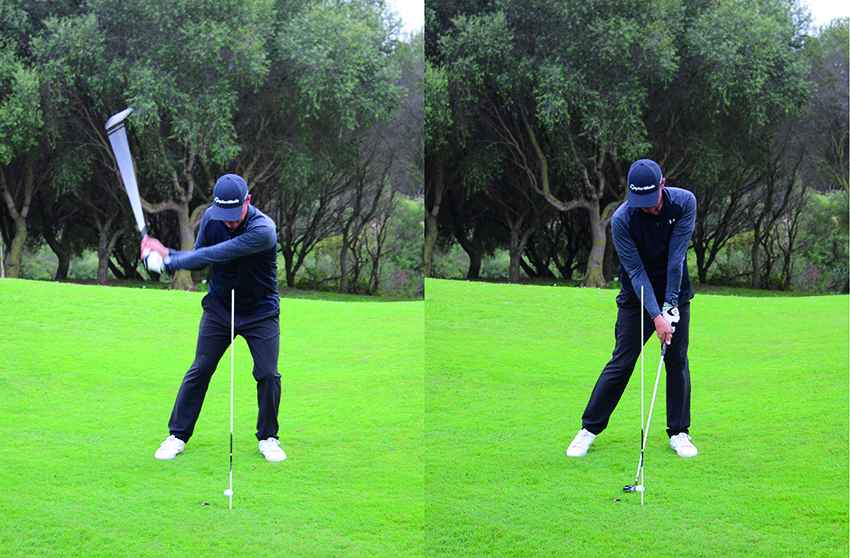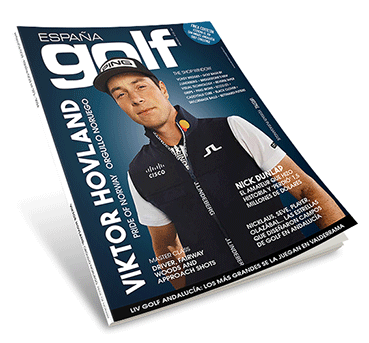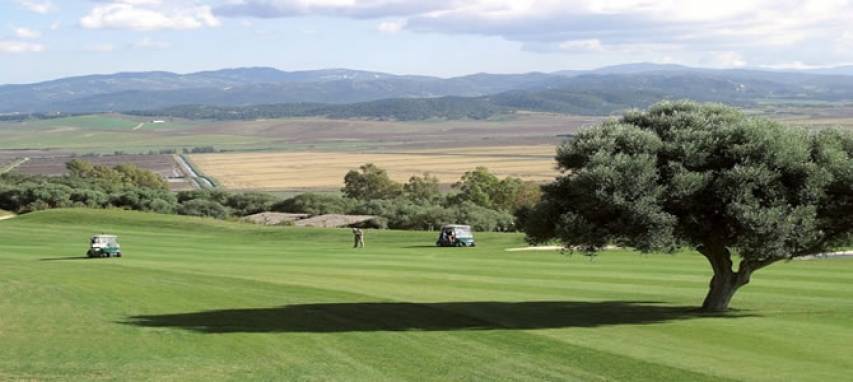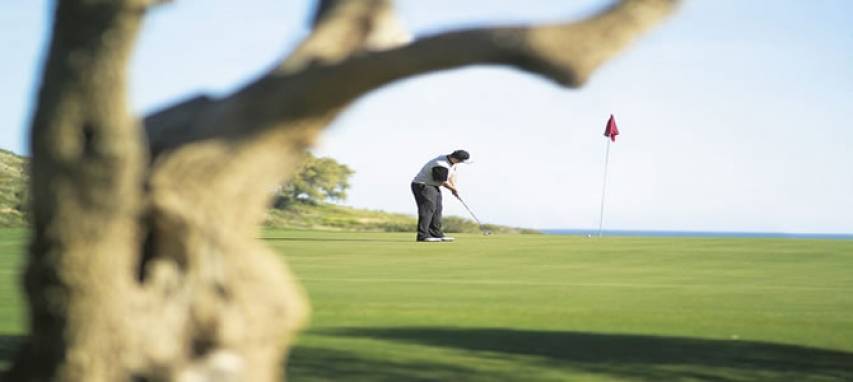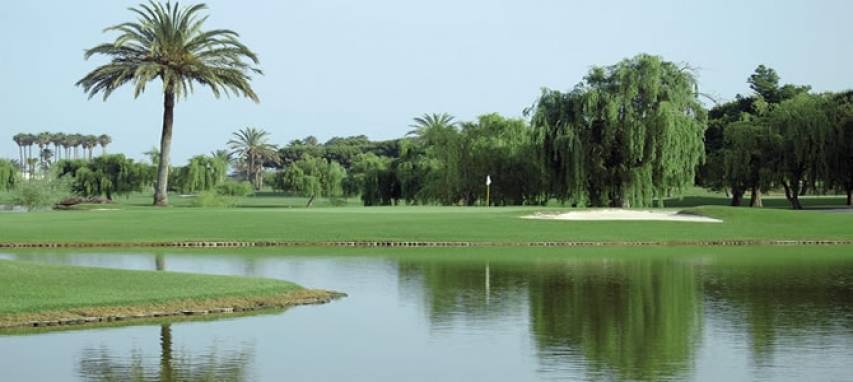In this lesson I discuss three key shots from different parts of the course and explain how amateur golfers should approach them.
The specific shots are:
1- Shots from the tee – getting the most out of your driver.
2- Long shots with hybrids and woods from the fairway without a tee – to gain extra distance on shots from the fairway.
3- Short shots under 75 metres – more accurate and controlled shots.
.
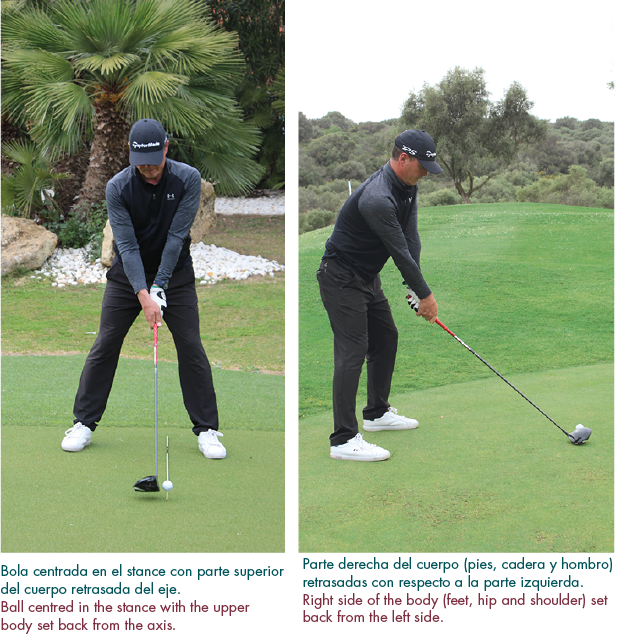
- Shots from the Tee
It is quite common in my daily golf lessons, and with students with medium-high handicaps, to find they have a slice effect on long shots that limits their results when playing a round out on the golf course, as it causes them to lose distance and accuracy.
That is why my advice is to work on the opposite effect: to play with a little draw, right to left effect for right-handed players.
With the DRIVER
Stance
You must avoid positioning the ball too far towards the left foot. It is best to centre the ball in your stance and not to the left side of your body.
Grip
Move the grip slightly to a strong position: you will only have to turn your left hand a little to the right.
Body
- Move the upper part backwards with respect to the axis with the ball.
- The right part of your body should be slightly set back (feet, hips and shoulders).
That will mean you start the swing with your body already slightly turned.
Swing
By starting slightly turned, you facilitate an inside out line. Your ball will come out a little more to the right of the target and, if you use our hands well, you will create a draw effect on the shot that will provide extra distance.
.
.
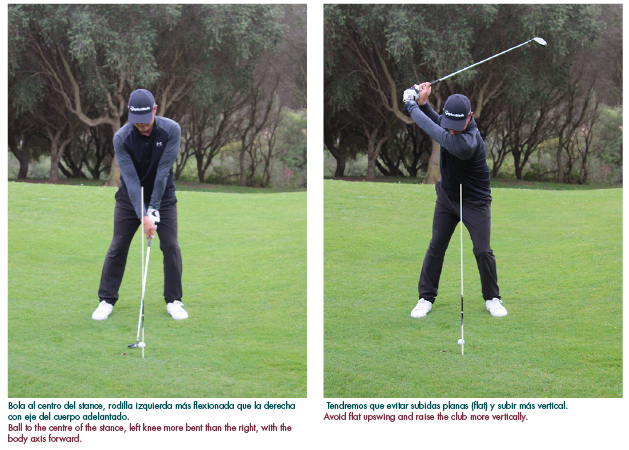
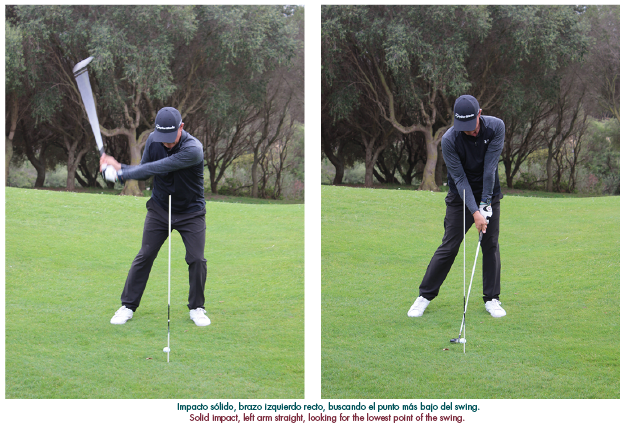
- Long Shots from the Fairway without a Tee
Fairway Woods and Hybrids
Hybrids have made a lot of work easier for these shots, and I think it is an indispensable club in your golf bag.
Fairway woods are a bit more complicated to use but will give you extra distance compared to hybrids.
On a technical level, you need to work on the same factors.
Stance
The position of the ball should be as centred as possible, with the weight on the left side.
My advice is that your left leg should be slightly more bent than your right.
Grip
Try to grip the club a little shorter: this way you will feel the weight of the club head more, which is necessary to achieve a good impact.
Body
In this case it will help you maintain the head-ball axis, although if you move your body a little further forward you will be able to obtain a more vertical angle. This posture will help you to avoid topped shots, a common mistake with these clubs when the ball is on the fairway and not on a tee.
Swing
Align the shoulders to the target to avoid generating an overly flat swing plane. It is important that the club reaches the lowest point, and it is okay if you take a divot. If you are looking for a more straight backswing without dropping the club, you will improve these shots.
.
.
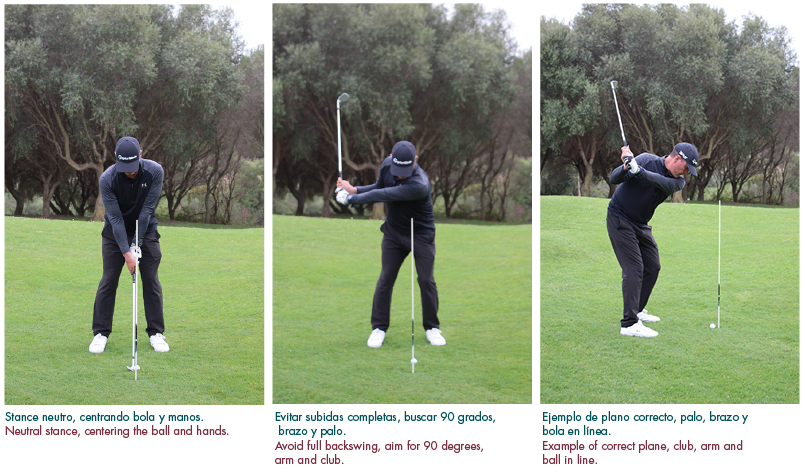
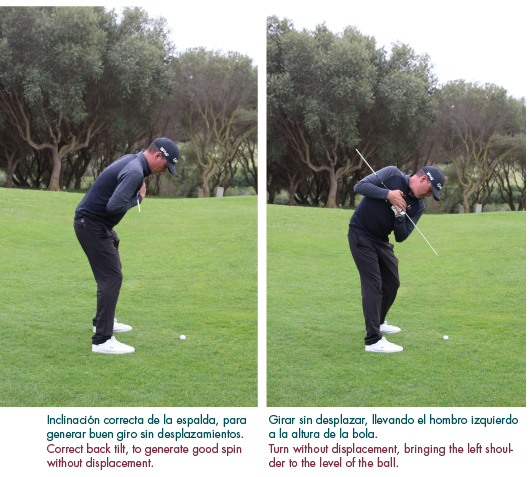
- More Accurate Short Shots (under 50 metres)
My advice for these shots is, whenever there is a possibility of hitting low, this will be better than high.
Therefore avoid clubs that make you force shots for distance and use others that allow you to reach the target while generating a more relaxed swing.
Stance
The club should be centred in the stance and don’t alter the degree by closing or opening it too much.
Under no circumstances should you move your hands forward in front of your left leg. This is a common mistake that generates heavy shots, in addition to the weight being slightly on your left leg.
Body
Posture is a key factor. The upper body will have to be well inclined, as this will help generate a good rotation of your upper body, essential for these shots.
Lateral displacement on these shots will cause errors in distance or accuracy.
Swing
Avoid a full swing. Play with medium shots on both the backswing and the downswing. The swing line should not be inside-out. Try to move the club in line, but without blocking the swing, as the club needs to hit the ground or take some divot.
Play with the Bounce of the Club
I would especially like to emphasise this point, as placement is key. If you move your hands forward too much, the club will hit the ball with the edge of the head and could become stuck.
Therefore, the base or bounce of the club comes into play when the hands are properly positioned. This bounce is designed so that the club rebounds and doesn’t stick. Keep that in mind and work on this aspect, as it will help you greatly.



